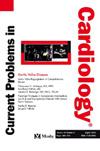磁共振成像对心脏肿块的评估:预后价值及与组织病理学的一致。
IF 3.3
3区 医学
Q2 CARDIAC & CARDIOVASCULAR SYSTEMS
引用次数: 0
摘要
背景:心血管磁共振(CMR)是一种非常有价值的评估心脏肿块(CM)的工具。然而,关于其预测患者预后能力的数据仍然有限。因此,我们的目的是评估CMR在确定恶性肿瘤、其与死亡率的关系以及其与组织病理学分析的一致性方面的准确性。方法:观察性、回顾性研究。我们检查了2004年1月至2023年6月在一所大学医院因疑似CM而接受CMR的患者。排除疑似梗死相关血栓患者。数据是从电子病历中收集的。两位心脏成像专家以盲法对图像进行重新分析,记录了预定义的成像特征,将肿块分类为恶性或非恶性(包括囊肿、血栓和正常变异),从而得出推定诊断。采用生存分析和Cox回归比较各组死亡率。在组织学证实的病例中,使用Cohen’s Kappa系数评估CMR推定诊断与最终组织学诊断之间的一致性。结果:我们确定了75例疑似CM患者,其中24例(32%)为恶性,51例(68%)为非恶性。与恶性肿瘤最密切相关的影像学变量包括多发肿块、多腔受累、浸润征象、心包积液、灌注异常和晚期钆增强。相反,肿块移动与非恶性诊断相关。中位随访时间为30个月[IQR 4-67.5]。CMR发现的恶性肿块与较高的死亡率相关:(HR: 3.72;95% CI: 1.8-7.72,结论:CMR确定的CM恶性与较高的死亡率相关。CMR的推定诊断与组织病理学结果吻合良好。本文章由计算机程序翻译,如有差异,请以英文原文为准。

Assessment of cardiac masses by magnetic resonance imaging: prognostic value and agreement with histopathology
Background
Cardiovascular magnetic resonance (CMR) is a highly valuable tool for evaluating cardiac masses (CM). However, data on its ability to predict patient outcomes remain limited. Therefore, our objective was to assess the accuracy of CMR in determining malignancy, its association with mortality, and its agreement with histopathological analysis.
Methods
This was an observational, retrospective study. We examined patients who underwent CMR due to suspected CM from January 2004 to June 2023 at an university hospital. Patients with suspected infarction-related thrombosis were excluded. Data were collected from electronic medical records. Images were reanalyzed in a blinded manner by two cardiac imaging specialists, documenting predefined imaging characteristics to classify masses as malignant or non-malignant (including cysts, thrombi, and normal variants), leading to a presumptive diagnosis. Mortality rates across groups were compared using survival analysis and Cox regression. In cases with histological confirmation, agreement between the presumptive CMR diagnosis and the final histological diagnosis was evaluated using the Cohen’s Kappa coefficient.
Results
We identified 75 patients with suspected CM, of which 24 (32 %) were classified as malignant and 51 (68 %) as non-malignant. Imaging variables most strongly associated with malignancy included the presence of multiple masses, involvement of multiple chambers, signs of infiltration, pericardial effusion, perfusion abnormalities, and late gadolinium enhancement. In contrast, mass mobility was associated with a non-malignant diagnosis.
The median follow-up was 30 months [IQR 4-67.5]. Malignant masses identified by CMR were associated with higher mortality: (HR: 3.72; 95 % CI: 1.8–7.72, p < 0.001). Histopathological studies were performed in 34 patients (45 %) and compared with the presumptive etiological diagnosis obtained by CMR. The level of agreement was excellent for malignancy (k = 0.88, p < 0.001) and good for etiological diagnosis (k = 0.63, p < 0.001).
Conclusions
Malignancy of a CM, as determined by CMR, was associated with higher mortality. There was good agreement between the presumptive diagnosis by CMR and the histopathological findings.
求助全文
通过发布文献求助,成功后即可免费获取论文全文。
去求助
来源期刊

Current Problems in Cardiology
医学-心血管系统
CiteScore
4.80
自引率
2.40%
发文量
392
审稿时长
6 days
期刊介绍:
Under the editorial leadership of noted cardiologist Dr. Hector O. Ventura, Current Problems in Cardiology provides focused, comprehensive coverage of important clinical topics in cardiology. Each monthly issues, addresses a selected clinical problem or condition, including pathophysiology, invasive and noninvasive diagnosis, drug therapy, surgical management, and rehabilitation; or explores the clinical applications of a diagnostic modality or a particular category of drugs. Critical commentary from the distinguished editorial board accompanies each monograph, providing readers with additional insights. An extensive bibliography in each issue saves hours of library research.
 求助内容:
求助内容: 应助结果提醒方式:
应助结果提醒方式:


